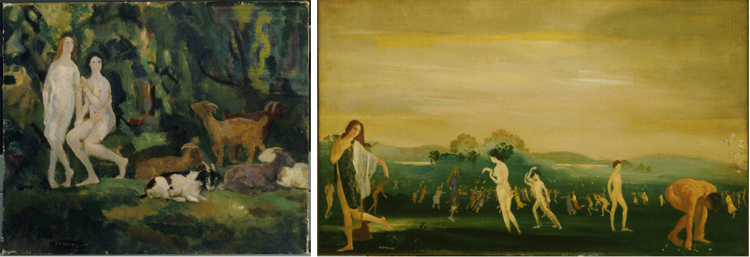
Arthur B. Davies, The Hesitation of Orestes, c.1915-18. Oil on canvas, 26 x 40 1/8 in. The Phillips Collection, Washington, D.C. Acquired 1923.
Art and Archaeology publishes Duncan Phillips’s article, “The American painter, Arthur B. Davies,” a painter about whom Phillips will write many times in the coming years. In the article, Phillips invokes Piero di Cosimo as a painter of related spirit. Around the time Phillips is writing his article, Davies is creating The Hesitation of Orestes, which clearly shares a palette, perspective, and setting with Piero’s A Hunting Scene (c. 1507-08).
. . . However, in spite of the technical distinction of the art of Davies, the originality of the work is mental rather than manual. The paradox of his aggressive attitude as a chef d ecole of modernity is that really he is only a modern edition of that quaint primitive Piero di Cosimo. In every age such dreamers seem unsatisfied, preferring evocations of the past and intimations of the future to sensations of the present hour.
In this year, Phillips acquires at least two works by Davies: Many Waters (c. 1905) and Visions of Glory (1896).




